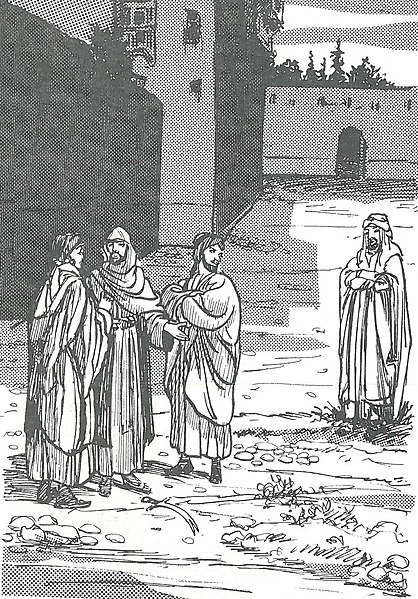Umar ibn al-Khattab, also spelled Omar, was the second Rashidun caliph, ruling from August 634, when he succeeded Abu Bakr as the second caliph, until his assassination in 644. Umar was a senior companion and father-in-law of the Islamic prophet Muhammad.
Calligraphic seal featuring Umar's name, on display in the Hagia Sophia, Istanbul
Early 20th-century depiction of Abd al-Rahman (ibn Awf or ibn Abi Bakr) witnessing the purported conspiracy of Abu Lu'lu'a, Hurmuzān, and Jufayna (wrongly depicted here as a woman; the depiction of the murder weapon may also be wrong)
Tombstone of caliph Umar, in the Green Dome in al-Masjid al-Nabawi, Medina. The first window from the right gives a view of Umar's grave.
The Rashidun Caliphate was the first caliphate to succeed the Islamic prophet Muhammad. It was ruled by the first four successive caliphs of Muhammad after his death in 632 CE. During its existence, the empire was the most powerful economic, cultural, and military force in West Asia and Northeast Africa.
Coin of the Rashidun Caliphate, circa 647–670, imitating Byzantine coins, featuring a Byzantine figure (Constans II) holding a scepter and globus cruciger
Tombs of caliphs: Abu Bakr and Umar (right), Medina, present-day Kingdom of Saudi Arabia
Muhammad's widow, Aisha, battling the fourth caliph Ali in the Battle of the Camel (16th-century miniature from a copy of the Siyer-i Nebi)
Illustration of the Battle of Siffin, from a 14th-century manuscript of the Tarikh-i Bal'ami






